Best of India Tours
- Golden Triangle Tour- Best of India & Nepal
- Classical Rajasthan
India Cultural Tours
- Images of North India- Karnataka Heritage
- Rajasthan & Goa Tour
Discover India Tours
- Grand India Tour- North to South India
- Central to South India
Rajasthan Tours
- Classical Rajasthan Tour- Golden Triangle Tour
- Grand Mughal Tour
India Luxury Trains
- Palace on Wheels- The Golden Chariot
- India Deccan Odyssey
- The Indian Maharaja
- Royal Rajasthan on Wheels
Nepal Tours
- Glimpses of Nepal- Buddhist Pilgrimage
- Nepal River Rafting
- Destinations of Nepal
- Nepal General Info
India Wildlife Tours
- North India Wild Life- South India Wildlife
Tibet Tours
- Tibet Monastery Tours- Explore Tibet
- Destinations of Tibet
Spa & Yoga Tours
- Ananda in Himalayas- Yoga & Meditation
Adventure Tours
- Manali Safari Tour- Himalayan Trekking
- Horse Safari
Darjeeling
Darjeeling
![]() Kalimpong
Kalimpong
![]() Kolkatta
Kolkatta
![]() Sunderban
Sunderban
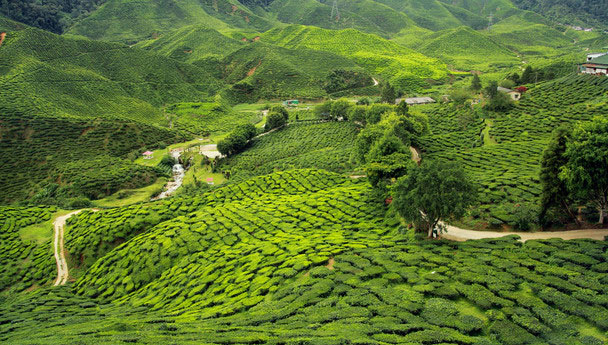
For witnessing the sheer magnificence of mountains, unsullied and pristine, nothing compares with a visit to the famous hill station of Darjeeling in West Bengal. Even as you drive up the curvaceous roads or take the famous toy train to your destination, you will be awestruck by the resplendence of nature. From the humid plains, you suddenly fill your tired lungs with fresh mountain air. Gurgling streams rush past and in springtime, the ranges are flaming with rhododendrons. The ethnic population is friendly and the influence of Buddhism is strong. Past the Batsia loop, past the Ghoom Buddhist monastery, past the lush tea gardens, you finally arrive in a quaint town with slanting red roofs among the recent upsurge of concrete, peeping at you from behind lofty pines.
Like many other hill stations, Darjeeling rose into prominence during the British Raj when it was developed as a major rest and recreation centre. Until the 19th century, Darjeeling (derived from Dorje Ling, meaning the place of the thunderbolt) was part of Sikkim. In 1817, Sikkim conceded the rights to use the place as a health sanitarium to the British after they helped to settle a rather disastrous dispute between Sikkim and Nepal. The imprint of the English on Darjeeling is indelible and can be seen in its gardens, tea estates, hotels and lifestyle.
Sightseeing
Darjeeling offers all that is precious in nature—the hush of the hills, the green depth of the forest and the majesty of the mountains. It is a tradition while visiting Darjeeling to go to the Tiger Hill before daybreak to see the first rays of the sun strike the mountains. Another tradition is to spend a few hours everyday taking in the air at the Chow Rasta (crossroads), the promenade at the centre of the town. The Himalayan Mountaineering Institute is a paradise for trekkers. You can, if you wish, go on short or long treks, depending on your stamina and enthusiasm. The Tibetan Self-Help Centre has a range of carpets for sale in their showroom, woven with dexterity on the premises by refugees who fled their land with the Dalai Lama. Take a look, if not a pick. Also remember to visit the Padmaja Naidu Himalayan Zoological Park and in case it is the /’season/’ and you are an untested racing freak, go to India/’s stupendous race-course in Lebong, nestled high in the mountains. Other places to see include the Darjeeling Zoo which houses tigers, bears, wolves and the rare snow leopards and the Botanical Gardens with its collection of alpine plants, orchids and ferns. In addition, Darjeeling is famous for its flavoured tea all over the world. The brew is often compared to champagne and the tea gardens that dot the slopes are witness to this mammoth industry.
Excursions
Once you are through with the sightseeing inside Darjeeling town, it/’s the time to proceed to see the sites nearby. The journey itself is a thrilling experience with high-altitude mountains roads on one side and cloud-covered valley on the other. You can take short trips to Mirik, land of oranges, and the charming city of Kalimpong, famous for its orchids and curio shops. In the same area is Kurseong from where you can get a panoramic view of the Gangetic delta from Eagle/’s Crag. Some other nearby places that can be visited from Darjeeling include Takdah, Sandakphu, and Siliguri.
Excursions for Darjeeling
Observatory Hill
Strolling up the Mall, past the quaint Tibetan market, you arrive at the Observatory Hill, the popular meeting place for tourists as well as residents. It is a major tourist spot of Darjeeling, not only for its religious importance but also for the picturesque views the place offers. The view of the magnificent Mt. Kanchenjunga and the entire landscape below is a site worth seeing.
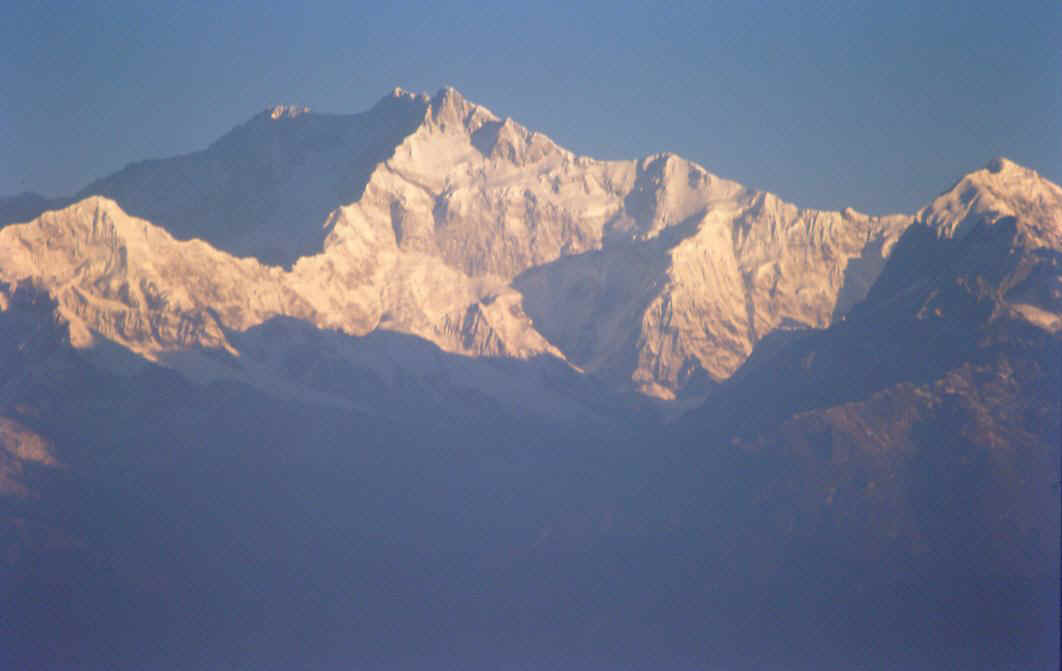
Himalayan Mountaineering Institute
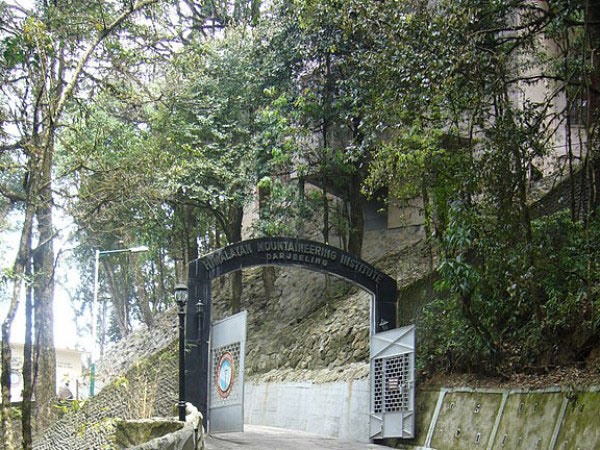
Located about two kilometres from the marketplace is the Himalayan Mountaineering Institute, which was established after the conquest of the Everest in 1954 by the then Prime Minister of India Jawaharlal Nehru. The institute has an interesting Everest Museum and also offers some mountaineering and adventure courses. Situated on the Jawahar Parvat, the institute is famous for its unique collection of mountaineering equipment and findings.
Ghoom Monastery
No visit to Darjeeling is complete without a visit to Ghoom, which is six kilometres away from the main town. The hillock is dominated by the famous Yiga Choeling Monastery and a 4.5-metre tall image of the Maitreya Buddha. Ghoom is at an altitude of about 2,407 metres, and offers a pectacular view of the Valley.

Tiger Hill

A strategic point to watch the spectacular sunrise is Tiger Hill, located at an altitude of 2,590 metres above sea level. It offers a magnificent view of the rising sun over the snow-capped Mt. Kanchenjunga and other great Eastern Himalayan peaks. You can also witness some of the high Himalayan peaks from here on a clear day.
Lebong Race Course
The Lebong Race Course, one of the world/’s highest race courses, was laid out in 1885 as a parade ground. Situated at a distance of about 8 km from the main town, the complete lap of the race course is only 480 yards long.
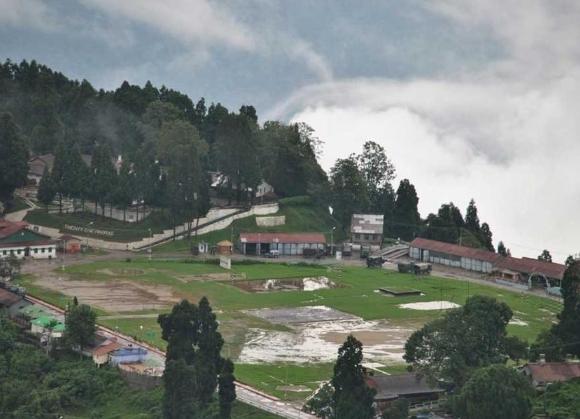
Bhutia Busti
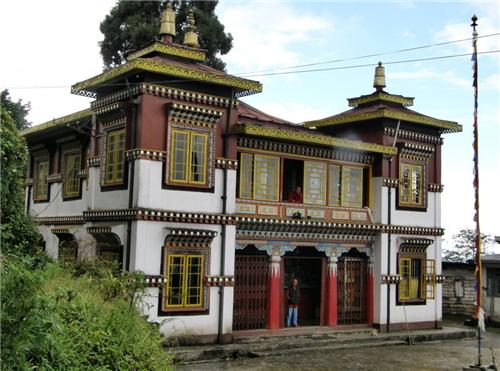
Situated at the backdrop of the Kanchenjunga near Chowrasta on C.R. Das Road, this colourful monastery is an important attraction of Darjeeling. Originally a branch of the Nygmapa sect/’s Phodang Monastery in Sikkim, it was transferred to Darjeeling in 1879. The shrine was formerly situated on the Observatory Hill. There is an old library of Buddhist texts upstairs
Dhirdham Temple
The Dhirdham Temple is situated near the railway station and is accessible either by a lazy walk or a jeep. The temple is similar in its architecture to the famous Pashupatinath Temple of Kathmandu in Nepal.
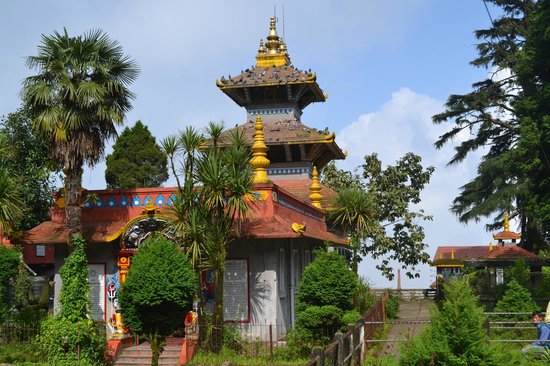
Tea Gardens
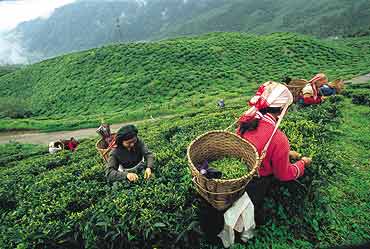
While in Darjeeling get to know some little-known details of the cuppa that cheers by visiting the tea gardens that dot the valley. In fact, the Darjeeling tea has attained for itself a name and a flavour that can neither be matched nor duplicated. There was a time when Darjeeling tea was a brew against which all other brands of tea used to be graded. Even today, connoisseurs fondly refer to it as the ’champagne of teas’. Out of over seventy tea gardens in the entire area, the Happy Valley Tea Estate is the nearest one to Darjeeling. Some tour operators provide packages that take you on special /’Tea Garden Tours/’ covering some exotically named gardens .
Kurseong
Kurseong is a peaceful hill station surrounded by some beautiful tea gardens. Situated at an altitude of 1,458 metres, the pollution-free climate and pleasing atmosphere of Kurseong make it an ideal resort to beat the summer/’s heat. The Makaibari Tea Estate and Forest Museum on Dow Hills are its main attractions. It also makes a mid-trip halting place between Siliguri on the plains and Darjeeling hills.
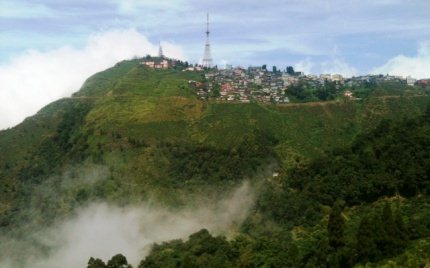
Mirik

Set in idyllic surroundings Mirik, 49 km Darjeeling, is a place for those seeking peace and tranquility. Perched at an altitude of 1,967 metres above sea level, the climate here is cool and temperate. The Sumendu Lake at the bottom of Mirik Spur is the most dominating feature reflecting the magnificence of the eastern Himalayas. You can ride in the colourful boats or cross the lake over an artistic bridge that leads you to a charming path through forests on the other side. Fishing is a popular pastime here. Mirik is almost completely surrounded by some of the best tea gardens of the region. It is also the largest producer of oranges in West Bengal. The orchards are on a spur two kilometres from Mirik.
Sandakphu
Sandakphu, 58 km from Darjeeling, is the only vantage point from where one can see four of the five highest peaks of the world, namely, Mt. Everest, Kanchenjunga, Makalu and Lhotse. Popularly known as the /”trekkers/’ paradise,/” Sandakphu offers you an opportunity of trekking among the virgin forests and vales of the Himalayas with magnolias, rhododendrons, primulas, and other alpine flowers lining the way.
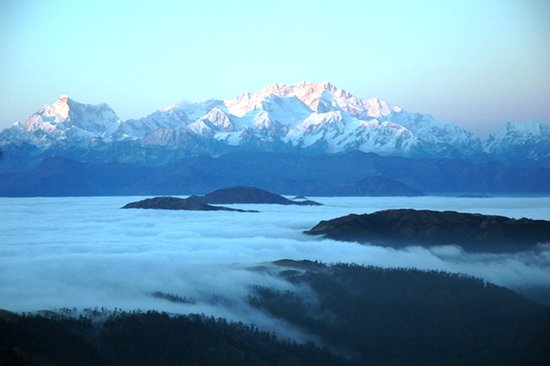
Takdah
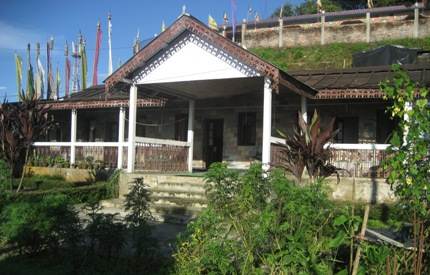
Situated at a distance of 26 km from Darjeeling, the Takdah valley is famous for the beautiful nurseries that preserve some of the rare species of orchids and plants of Himalayan origin. Takdah also produces some of the best-flavoured tea of the world.
Fact File
 Area: 10.57 sq. km
Area: 10.57 sq. km
 Population:73,062
Population:73,062
 Altitude: 2,134 m above sea level
Altitude: 2,134 m above sea level
 Best Time to Visit:March-May and September-November
Best Time to Visit:March-May and September-November
 Languages:Bengali, Nepali, Hindi, and English
Languages:Bengali, Nepali, Hindi, and English
 STD Code:0354
STD Code:0354




